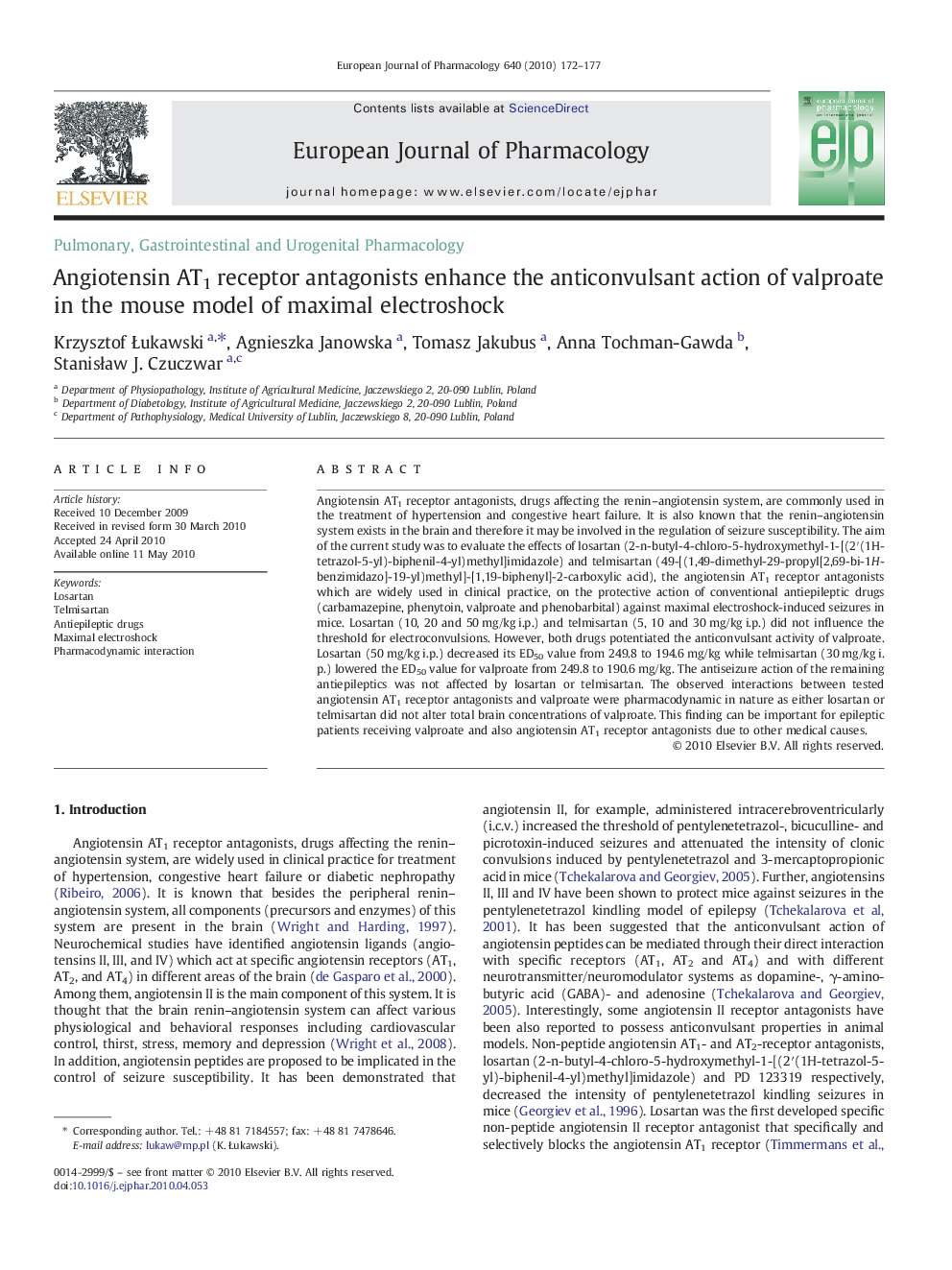| Article ID | Journal | Published Year | Pages | File Type |
|---|---|---|---|---|
| 2533377 | European Journal of Pharmacology | 2010 | 6 Pages |
Angiotensin AT1 receptor antagonists, drugs affecting the renin–angiotensin system, are commonly used in the treatment of hypertension and congestive heart failure. It is also known that the renin–angiotensin system exists in the brain and therefore it may be involved in the regulation of seizure susceptibility. The aim of the current study was to evaluate the effects of losartan (2-n-butyl-4-chloro-5-hydroxymethyl-1-[(2′(1H-tetrazol-5-yl)-biphenil-4-yl)methyl]imidazole) and telmisartan (49-[(1,49-dimethyl-29-propyl[2,69-bi-1H-benzimidazo]-19-yl)methyl]-[1,19-biphenyl]-2-carboxylic acid), the angiotensin AT1 receptor antagonists which are widely used in clinical practice, on the protective action of conventional antiepileptic drugs (carbamazepine, phenytoin, valproate and phenobarbital) against maximal electroshock-induced seizures in mice. Losartan (10, 20 and 50 mg/kg i.p.) and telmisartan (5, 10 and 30 mg/kg i.p.) did not influence the threshold for electroconvulsions. However, both drugs potentiated the anticonvulsant activity of valproate. Losartan (50 mg/kg i.p.) decreased its ED50 value from 249.8 to 194.6 mg/kg while telmisartan (30 mg/kg i.p.) lowered the ED50 value for valproate from 249.8 to 190.6 mg/kg. The antiseizure action of the remaining antiepileptics was not affected by losartan or telmisartan. The observed interactions between tested angiotensin AT1 receptor antagonists and valproate were pharmacodynamic in nature as either losartan or telmisartan did not alter total brain concentrations of valproate. This finding can be important for epileptic patients receiving valproate and also angiotensin AT1 receptor antagonists due to other medical causes.
